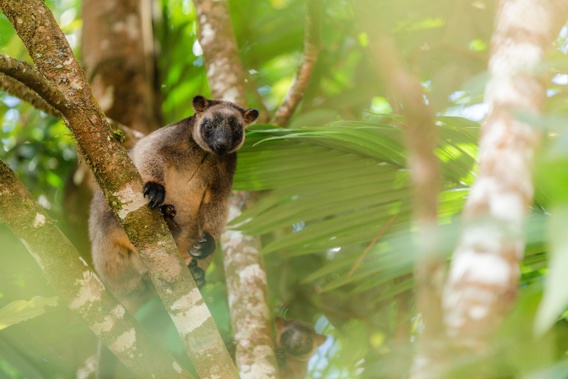
Don’t you love it when you venture to new territory which knocks your expectations out of the park? I’ve just had such an experience when taking a cool change from North Queensland’s tropical coastline for a highlands escape. Just over an hour’s drive from Cairns, the Atherton Tablelands is a bucolic and woodsy delight, where elevated fertile farmland and ancient rainforests set the stage for rewarding outdoorsy exploration. As I made my way over the twists and turns of the Gillies Highway, a nonchalant Southern Cassowary briefly brought the road traffic to a grinding halt. These birds are not to messed with and I happily gave him the right of way as he intimately ambled past my gleaming rental car, casting an imperious glance my way, as if to say, “you’re in my territory, now”. After that brief brush with the birdlife – and thankfully no rental car damage, the warm embrace of Yungaburra soon shuffled into view, 750 metres above sea level.
This chocolate-box pretty, pint-sized town, with an unmistakable village vibe, would have to be one of Queensland’s most immaculately maintained villages. It’s an irresistible vision of restored heritage buildings, laden with hanging baskets and fronted with well-clipped berms. Generously endowed with boutique shops, cafes and bars, it’s catnip for tourists and just the spot for leisurely lingering. For some great local nosh, enjoy dinner at Our Place. This casual little bistro with an open kitchen is manned by David and Loren Norton. The menu is Mediterranean-oriented, with contemporary Australian dishes including salmon linguine, lamb rump and a fabulous stack of grilled vegetables with bocconcini.
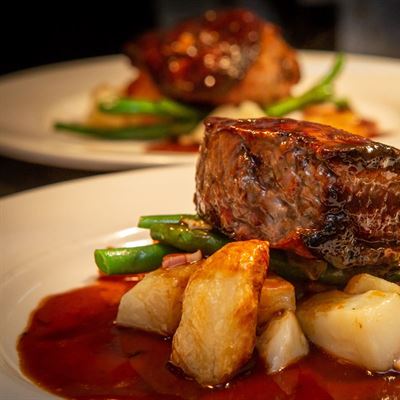
Our Place, Yungaburra. Photo / TTNQ
Crank up the tranquillity dial to high and check-in to Rose Gums Wilderness Retreat. Voluptuous, green farmland chewed by cows unfurls like a blanket from Yungaburra on the 15 minute drive to the retreat, via some lonely rolling country lanes. Upon arrival, you’ve got 200 acres of pure highlands paradise to call home. Graced by a cluster of secluded treehouses, scattered about the rainforest surroundings, soak up the east-facing views of Wooroonooran National Park from your elevated roost. You’ll spot Queensland’s tallest mountain from here too, Mt. Bartle Frere. The pole and timber houses are equipped with kitchen facilities and feature large baths, cosy fireplaces and expansive balconies with truly sublime forest views. The elemental peace and splendour of this mountain retreat enraptured me, from tinkling rainforest streams to forest-bathing on the ten kilometres of private walking tracks.
The 600 year old giant Rose Gum is a star specimen. I have to admit, I’m a devoted twitcher and Rose Gums is all aflutter with radiant bird life. Some of the local heroes are the Blue-faced Parrot-finch, the Tooth-billed Bowerbird and Victoria’s Riflebird. Over 160 bird species have been recorded here – including sauntering Southern Cassowaries. At reception, Dave encouraged me to take a walking stick with me so that in the event I came into close contact with one of these birds, “give the stick a couple of taps on the ground, to shoo him away. Don’t hit them – you’ll come off second best!” Every morning at 8:30am, the wildlife comes to you just by reception, for the breakfast feeding. This attracts a lively flock of colourful King Parrots and Rainbow Lorikeets, along with the musky rat-kangaroo, the smallest and most primitive kangaroo in the world. This is a divine retreat to anchor your Tablelands foray. www.rosegums.com.au
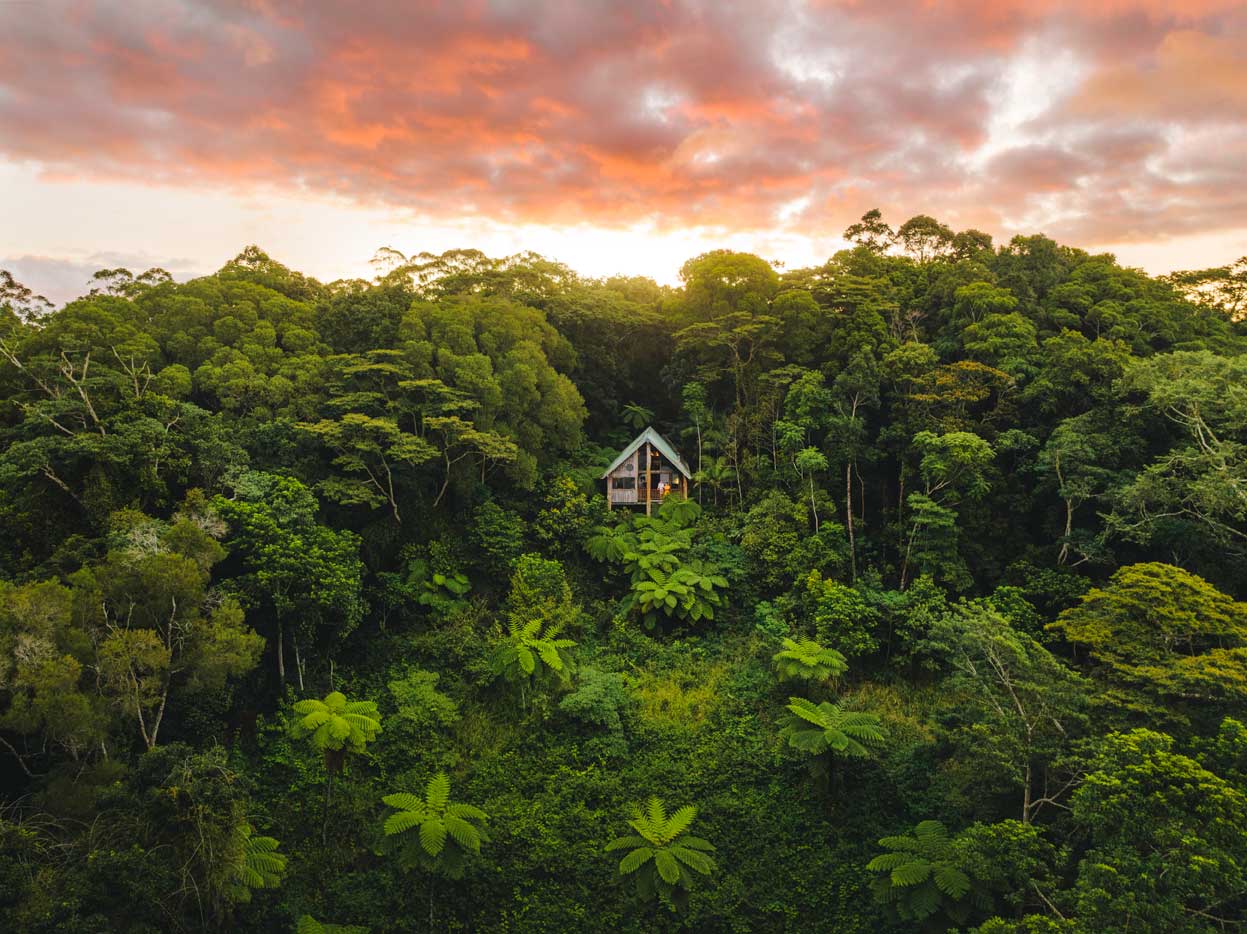 Rose Gums Wilderness Retreat. Photo / Supplied
Rose Gums Wilderness Retreat. Photo / Supplied
I took my twitching passion up a notch, by joining James Boettcher – a qualified zoologist and owner of FNQ Nature Tours. His unbridled passion for nature and wildlife is infectious as he shares his big backyard with you on his custom-made tours of the Atherton Tablelands. He’s highly entertaining company and an exceptional guide who will bring the essence of the Tablelands to life with panache. Best of all, he’s also quite the bird whisperer, who helped me decipher the identities behind so many curious bird calls. The Spotted Catbird is well named – he sounds just like a mating feline. Then there’s Victoria’s Riflebird who screeches that distinctive sound of someone joining a Zoom call. Nearly half of Australia’s 700 bird species can be found in the Tablelands area, underpinning its prime stature as birding nirvana. Over the course of a day, James threaded together the Tablelands greatest hits. You could not wish for a more thrilling, enriching guided tour. www.fnqnaturetours.com.au
We started in Yungaburra where he led me to a stirring conservation success story, which has seen playful wild platypus return to Paterson Creek. Formerly running through farmland, vast riverbank plantings in native vegetation have restored the health of this waterway which adjoins the Mabi forest. Before long we spotted several perky platypus swimming in the creek. They are truly unusual critters. Even though they are mammals, platypus lay eggs rather than giving birth. And James remarked that the mothers don’t breastfeed their young. They don’t have teats. Instead they just suck on their chests and milk is excreted.
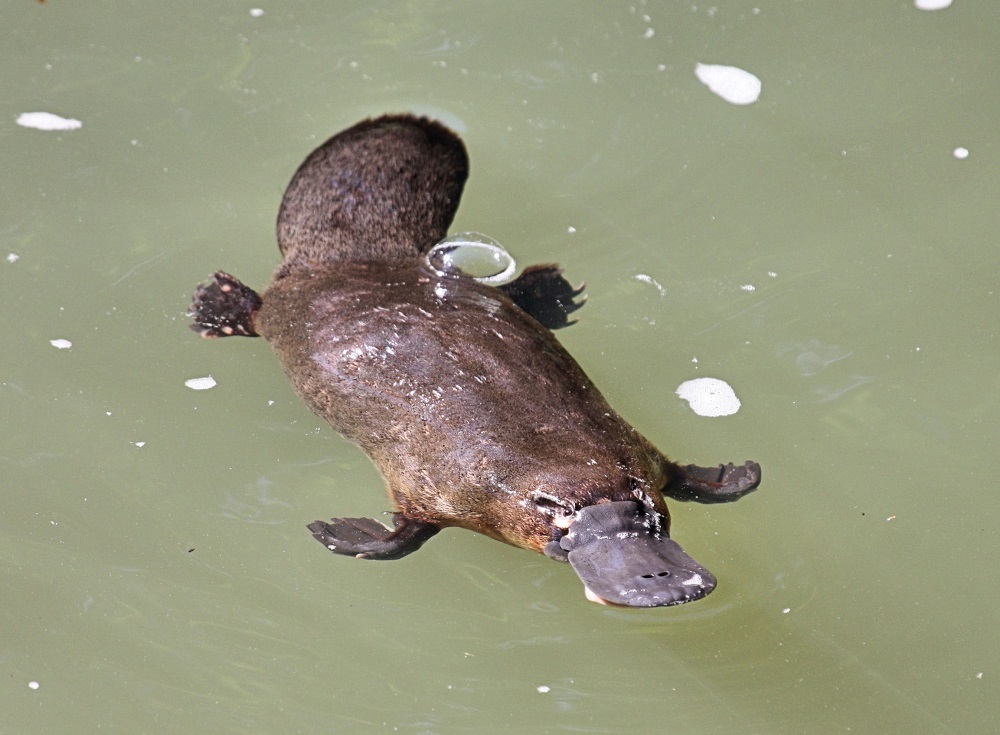 A wild platypus in Yungaburra. Photo / Supplied
A wild platypus in Yungaburra. Photo / Supplied
Look up and you might be lucky enough to spot Lumholtz’s tree kangaroo. Their long dangling tail is the giveaway. There are two species of tree kangaroos, but these guys call the Tablelands area home. Lumholtz’s tree kangaroos are quite large and have a light-grey coat with a black mask on the face. Don’t mistake them for possums who are prolific in these parts! We also gazed up at a large colony of spectacled flying foxes, or fruit bats, hanging upside down in the trees. They might struggle in the affection stakes, but they are crucially important seed dispersers for the rainforests of the wet tropics.
We tootled over to Lake Barrine where a pot of tea and oven-fresh scones provided the ideal morning pick-me-up at the lakeside teahouse, which is about to mark its centenary. Boarding their boat, we cruised the placid waters of this ancient volcanic crater, enrobed by dense rainforest and giant bull kauri pines. As the heat of day cranked up, freshwater turtles lazily basked on rocks, before disappearing into the vivid blue water with a loud plop. I also spotted the Eastern water dragon which is easier said than done, given their impressive camouflaging.
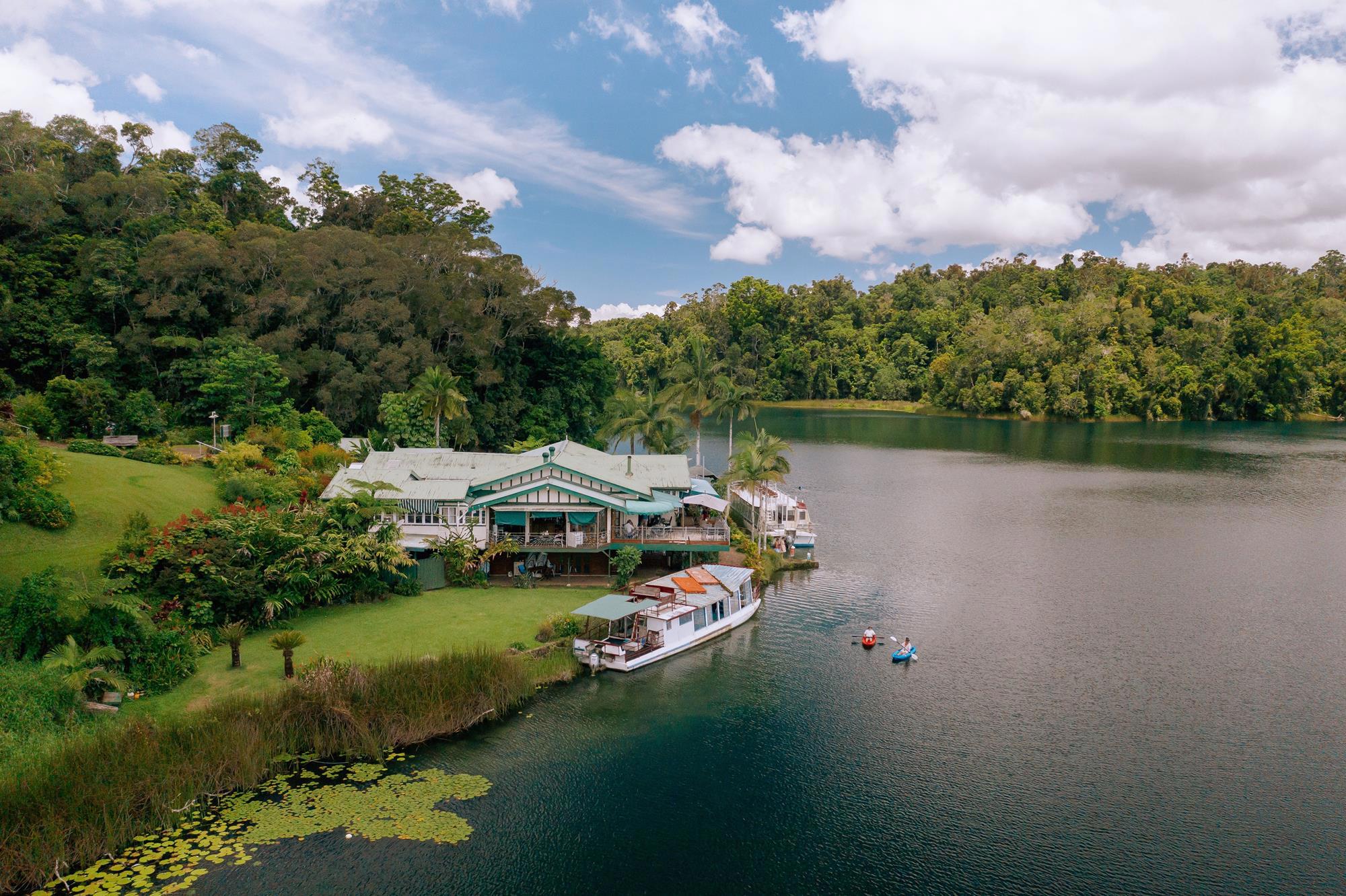 Lake Barrine. Photo / TTNQ
Lake Barrine. Photo / TTNQ
Lake Eacham is another volcanic crater lake, fringed with bird-twittering forest. The striking mirror-smooth emerald water is pitch-perfect for a cool-down plunge after knocking off the 3km circuit walk. You’ll be sharing the lake with turtles and the solitary resident freshwater crocodile. Apparently, it’s harmless unless you disturb it, James assured me. I took his word for that, without putting it to the test.
The Tablelands area boasts some frothy waterfalls and a short hop from Lake Eacham is Malanda Falls. This wide curtain of cascading water is four metres high and 30 metres wide and the cool, tumbling over old basalt lava flows. Insta-perfection. Plus, the adjacent rainforest is a prime spot for more tree kangaroo spotting. The perky little township of Malanda is a great stop for lunch and proudly home to the Big Pub, Australia’s largest wooden hotel. Opened in 1911, the big girl is still going strong.
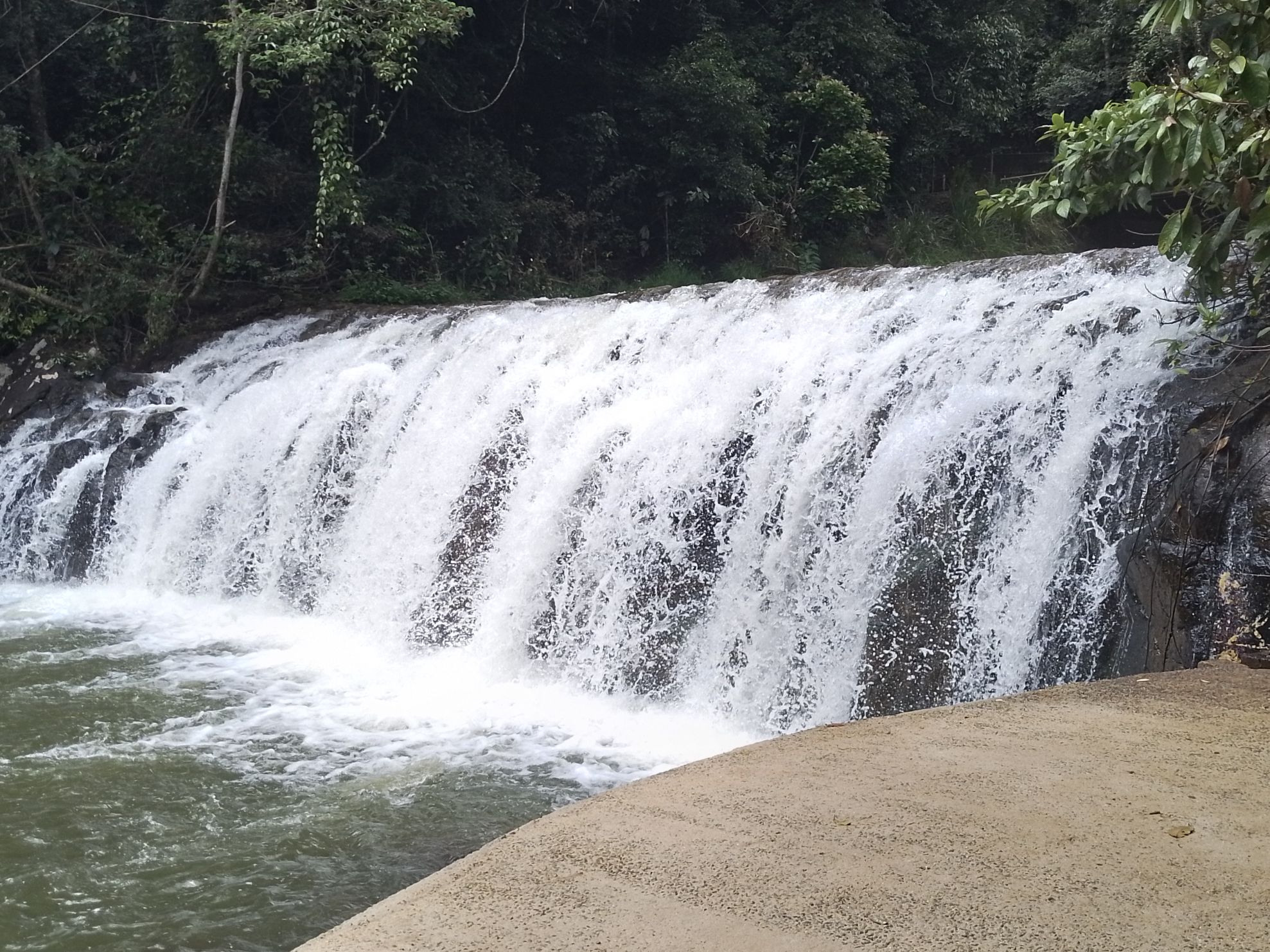 Mandala Falls. Photo / Mike Yardley
Mandala Falls. Photo / Mike Yardley
Don’t leave the Tablelands without marvelling over to monstrous fig trees. First up, close to Yungaburra, the Curtain Fig Tree. What makes it so special is the extensive aerial roots that cascade an impressive 15 metres down to the forest floor, creating a stunning ‘curtain’ effect. This incredible phenomenon began when a tiny fig seed found its way to the canopy of a tree. Over centuries, the fig tree sent down vertical roots that gradually thickened and intertwined. These roots eventually strangle the host tree. The result is a freestanding fig tree that reaches almost 50 metres in height and a massive trunk circumference of 39 metres. It’s estimated to be over 500 years old.
Also standing as a living testament to Australia’s ancient natural history, the Cathedral Fig Tree, in the rainforest finery of Danbulla. With a crown as big as two Olympic swimming pools towering nearly 50m over you, this mighty 500-year-old tree is quite the forest giant. A circular boardwalk enables to you to get up close to its muscular buttress roots and the immensity of the crown sprawling above you. James mentioned that as a kid he used to scale this tree, because the intertwined roots are like latticework and easy to secure your step. I could tell he was wild child. Climbing this giant is strictly prohibited, now. These two gigantic fig trees stand like sentinels to nature's timeless beauty and unbowed resilience – and sheer awe. Go early for the dawn chorus! www.cairnsgreatbarrierreef.com
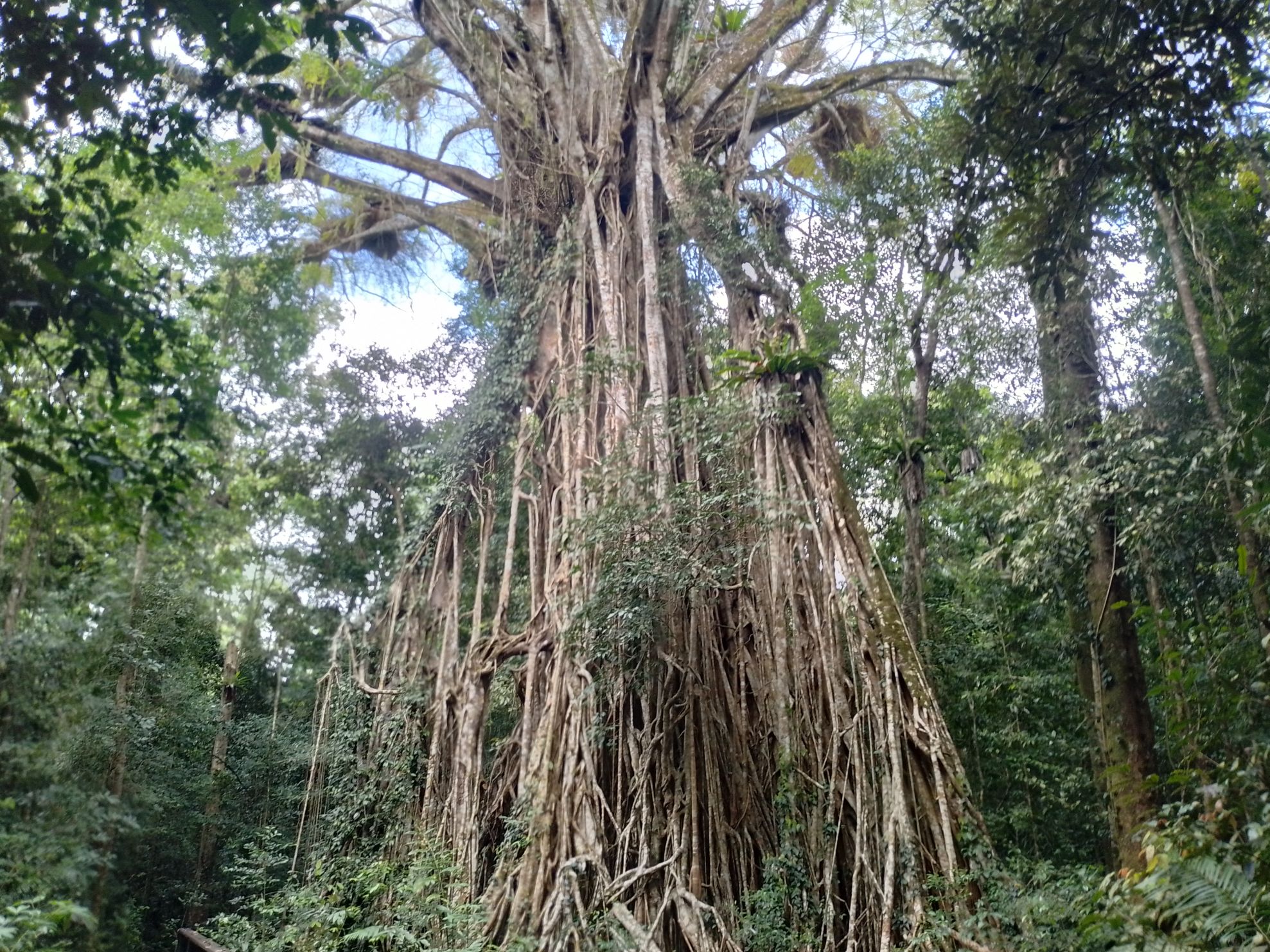 A mighty Cathedral Fig Tree. Photo / Mike Yardley
A mighty Cathedral Fig Tree. Photo / Mike Yardley
I flew to Cairns with Qantas, who offer well-timed connections via Sydney, Melbourne and Brisbane. Flying to over 60 destinations across Australia, for best flights and fares head to www.qantas.com
Mike Yardley is our resident traveller on Jack Tame Saturday Mornings.
Take your Radio, Podcasts and Music with you









